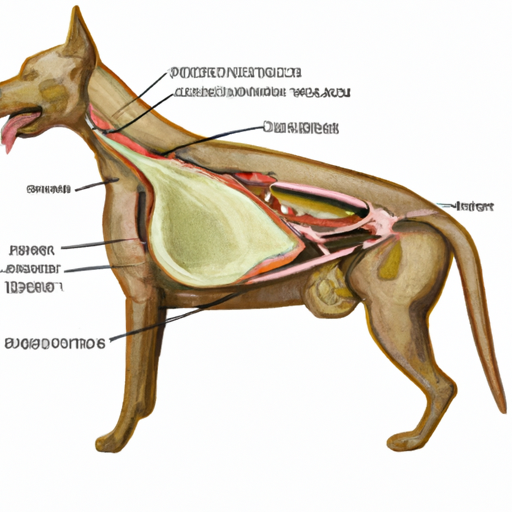Understanding a Dog’s Anatomy
Often as caregivers, you might wonder about the location and complexity of your dog’s internal organs. It’s natural, as your curiosity is fueled by your undying love for them. The stomach of a dog is located more towards their left side, just behind the ribcage. This might seem a little different from us humans, but such is the design of a canine’s anatomy.
The Significance of the Stomach’s Location
The location of a dog’s stomach holds great importance. It’s positioned in such a way that supports the natural process of digestion. You see, the food your dog consumes travels down a tube known as the esophagus. It then enters the stomach, located on the left side, where it gets broken down by gastric acids. This design is what aids in efficient digestion.
Recognizing Symptoms of Stomach Issues
As a caregiver, it’s crucial that you are aware of the signs that could indicate an issue with your dog’s stomach. Here are some symptoms to look out for:
- Loss of appetite
- Excessive drooling
- Constantly licking the air
- Vomiting
- Swollen belly
While these symptoms may indicate a range of issues, they often point towards a problem with the stomach.
How to Maintain Your Dog’s Stomach Health
Maintaining your dog’s stomach health revolves around a balanced diet and regular check-ups. Here are a few pointers:
- Regularly monitor your dog’s eating habits. If you notice a sudden change, consult a vet.
- Stick to a balanced diet. Avoid feeding them harmful human food like chocolate or grapes.
- Ensure they get regular exercise. This helps in maintaining a healthy digestion process.
Potential Stomach Issues
There are a plethora of potential stomach issues that dogs can face. Here are some common ones:
| Problem | Symptoms | Treatment |
|---|---|---|
| Gastritis | Vomiting, lack of appetite | Depending on severity, may require hospitalization |
| Stomach Ulcers | Vomiting, weight loss | Medication, dietary adjustments |
| Bloat | Swollen belly, restlessness | Emergency condition, requires immediate medical attention |
FAQ
Q: Can a dog’s stomach move around inside their body?
A: No, a dog’s stomach is held in place by various muscles and ligaments.
Q: How can I tell if my dog’s stomach is in pain?
A: If your dog is showing signs of discomfort, like whimpering, restlessness, or loss of appetite, it may be experiencing stomach pain.
Q: Is it normal for a dog’s stomach to make noises?
A: Yes, just like humans, it’s normal for a dog’s stomach to make noises during digestion. However, if the noise is accompanied by other symptoms like vomiting or loss of appetite, consult a vet.
Remember, as caregivers, your dog’s health is in your hands. The more you understand their anatomy and potential health issues, the better you can provide for their needs.



